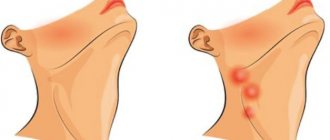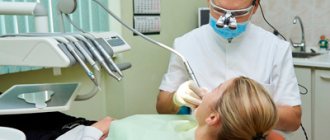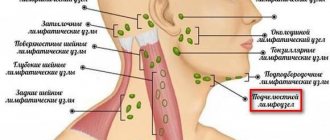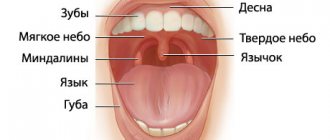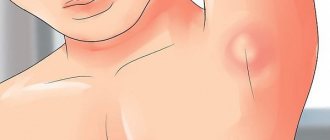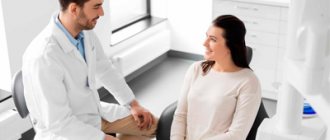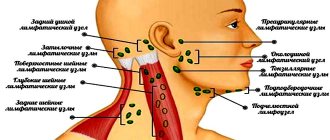Every third appeal to an oncologist on social networks or on remote consultation portals is formulated something like this: “save, help, I have enlarged lymph nodes.”
As a rule, young people write, usually from 18 to 25 years old, and I don’t remember a case when it eventually turned out that the situation required treatment from an oncologist. Most often, enlarged lymph nodes were caused by a sore tooth, sore throat, conjunctivitis, and so on.
It is clear that fear and fears for one’s health in such cases force one to immediately run to an oncologist.
However, is everything so simple, and is it worth rolling your eyes about any treatment with an enlarged lymph node?
My personal statistics show: if a person comes for a face-to-face consultation, he is already one of those few whose situation was not limited to the banal “it got sick and went away.”
Let's take a closer look at how the lymphatic system works and understand the nature of enlarged lymph nodes.
Fact #2
Lymphatic vessels are not something abstract.
It is worth crossing or ligating them, for example, during surgery on the axillary lymph nodes for breast cancer, and lymphostasis is likely to develop - swelling of the limb, which, again, most likely will not go away.
The most visible to us from the point of view of examination - the so-called peripheral lymph nodes (in the neck, supraclavicular, axillary and inguinal) can increase, and this is in most cases a manifestation of reactive lymphadenopathy - an inflammatory reaction indicating the fight against infection.
1.What are lymph nodes?
Lymph nodes
- These are small glands that resemble beans in shape and are located throughout the human body. Lymph nodes are part of the lymphatic system, through which fluid (lymph), nutrients move, and substances that the body does not need are removed into the bloodstream.
Lymphatic system
– an important part of the immune system that protects the body from disease. Lymph nodes filter lymphatic fluid (lymph) as it passes through them, trapping bacteria, viruses and other harmful and foreign substances, which are then destroyed by lymphocytes - white blood cells.
Lymph nodes can be single or in groups. The size of lymph nodes can range from very small - the size of a pinhead, to quite large - the size of a large grape. Lymph nodes can be felt in the neck, groin and armpits. In general, lymph nodes are usually not noticeable and do not cause pain when pressed on them. Most lymph nodes in the body cannot be felt at all.
A must read! Help with treatment and hospitalization!
Fact #3
Most often, the cervical and submandibular lymph nodes become inflamed, because in the facial part of the skull there are many open mucous membranes and associated infections.
A sore throat, carious or rotten teeth, and ear and eye bacterial and viral infections are the most common causes of cervical lymphadenopathy. The axillary and inguinal nodes react according to the same principle.
Therefore, if a lymph node is bothering you, first of all you need to go to a therapist, dentist, or ENT doctor.
If the genesis of lymphadenopathy is unclear, the doctor will prescribe an ultrasound, and during this study, attention will be directed mainly not to the size of the lymph node, but to its shape and differentiation of the structure.
Location of lymph nodes
Lymph nodes are small (0.5-5 5 mm) formations consisting of connective tissue and serve to cleanse the lymph of various toxins, metabolic products and pathogens that penetrate the blood. There are more than 600 of them in the human body, and they are located in groups along the lymphatic vessels in the most important areas of the body:
- in the area of the neck and lower jaw;
- in the center of the chest;
- in the axillary region;
- in the groin area;
- near the elbows;
- in the abdominal cavity;
- under the knees.
Human lymphatic system and location of lymph nodes on the body
Depending on the depth of their location, lymph nodes are divided into deep and superficial. The former are found in the deep layers of connective and muscle tissue, the latter in the subcutaneous layer. Superficial nodes in the normal state are not visually noticeable, but can be easily felt by palpation, while deep ones can only be seen with hardware examination, for example, on an X-ray or MRI.
Superficial lymph nodes, when enlarged, noticeably appear under the skin
The lymph nodes closest to the spine are located in the chest cavity; they are called mediastinal lymph nodes and are deep. Also quite close to the spinal column (its lower part) are the lymph nodes of the peritoneum and groin. But they are all located in the front, but on the back there are no such formations, neither superficial nor deep. Therefore, if a ball-shaped or small lump is felt under the skin of the back, it is most likely a wen or a cyst of the sebaceous glands, and not an inflamed lymph node.
Bumps on the back
Fact #5
Lymph nodes enlarge during cancer because cancer cells enter the lymphatic vessels draining a certain area, which then settle in the “filters” (lymph nodes) in the form of metastases and begin to grow there.
Such lymph nodes do not shrink after treatment of infectious diseases, but only increase, merging with other lymph nodes into conglomerates, extending beyond the lymph node and fixing it in the surrounding tissues. Such lymph nodes are rarely painful, they are dense, very dense.
Often in cancer, lymph nodes are affected by a “chain” that is clearly visible on palpation. With lymphomas, conglomerates are often visible from the outside. Of course, with such manifestations you need to go to an oncologist and hematologist.
For suspicious nodes, a biopsy will be performed in the absence of other causes. This is either a puncture with a needle and collection of material, or an operation to completely remove the lymph node for histological examination.
What do doctors recommend?
- Rule out the presence of infections and diseases that lead to an increase in lymph tissue.
- Regularly take a general blood test if no diseases are detected, but the lymph nodes are still enlarged. This picture may also indicate chronic sinusitis or adenoiditis.
- Donate antibodies of classes M and G to some viruses, in particular Epstein-Barr, cytomegalovirus, herpes, toxoplasmosis, etc.
- If the results are negative, go to an allergist and look for the cause together with him. Perhaps, after identifying the causative allergen, ASIT therapy or antihistamines will be prescribed. With proper treatment, positive dynamics without any complications are observed within a month.
If enlarged lymph nodes are accompanied by high fever, cough, runny nose, the skin over them acquires a pinkish tint, and painful sensations occur when pressed, this is a reason to consult a doctor as soon as possible. It is contraindicated to heat areas of inflammation, smear them with any medications, or make compresses. Any self-medication in this case can lead to undesirable consequences.
Back diseases and lymphadenitis
Can spinal diseases cause inflammation and enlargement of lymph nodes? There is no direct connection here, but with pathologies of the spinal column, microcirculation in the paravertebral tissues is often disrupted, for example, due to compression of the vessels through which blood and lymph pass. This leads to stagnation of lymph, accumulation of toxins, and the development of inflammation, which causes enlargement of lymph nodes and the appearance of pain.
Damage to the vertebrae and intervertebral discs often causes compression of the lymphatic vessels, which leads to stagnation of lymph and the development of inflammation in the lymph nodes
Such pathologies include, first of all, osteochondrosis, characterized by degenerative changes in the intervertebral discs and vertebrae. Most often, the cervical and lumbar regions are affected, near which there are groups of lymph nodes. With serious tissue damage, the reaction of the lymphatic system is immediately manifested by an increase in nodes, accompanied by inflammation and pain.
Osteochondrosis and inflammation of the lymph nodes
Other pathologies can cause the same reaction:
- Bekhterev's disease;
- spondylitis;
- spondyloarthrosis;
- radiculitis;
- sciatica;
- spinal cancer.
The development of a cancerous tumor in the spine also causes enlargement and inflammation of the lymph nodes
For information: with curvatures (scoliosis, kyphosis), lymphadenitis is usually not observed, unless the disease is complicated by a sharp decrease in immunity and serious disturbances in the functioning of individual organs and systems.
Symptoms
You can determine lymphadenopathy and lymphadenitis yourself only if the superficial lymph nodes are affected - in the neck, armpits or groin. The main signs are the formation of visible tubercles under the skin, dense, painful and mobile to the touch. Their appearance is usually accompanied by fever, general malaise, redness and swelling of adjacent tissues. Sometimes additional problems with breathing, tachycardia, the appearance of a rash in the area of the lump, and skin itching are observed.
Diagnostic methods
The main task of diagnosis for enlarged lymph nodes is to identify the real cause among many possible ones. An initial examination and history taking are ineffective here; the doctor can only confirm the presence of changes in the superficial nodes. Therefore, the patient needs to undergo a detailed examination.
Table. Diagnostic methods for enlarged lymph nodes
| Type of study | What does it show |
| Blood analysis | The level of red blood cells, lymphocytes, ESR, as well as the presence/absence of viral and bacterial infections are determined. |
| Provides a three-dimensional image of the affected area, which allows you to clarify the size of deep lymph nodes, identify neoplasms, and also determine whether there are pathologies of the spine. |
| Gives a more accurate result compared to fluoroscopy. Layer-by-layer images help to identify the slightest structural changes both in the lymph nodes themselves and in adjacent tissues and the spinal column. |
| Allows you to determine the location of lymph nodes, their size, number, structure. |
In some cases, when these studies do not reveal the exact cause, the patient undergoes a lymph node biopsy.
Link between swollen lymph nodes and back pain
When the lymphatic system does not cope with its task, the nodes become inflamed, increase in size and cause very painful sensations. At first, the pain is localized around the inflamed node, but then it spreads further and can radiate to other organs and parts of the body, as, for example, pain from a stomach ulcer radiates to the thoracic and lumbar spine. That is, with mediastinal lymphadenopathy it can hurt between the shoulder blades and in the upper back, with damage to the inguinal nodes - in the lower back, coccyx or sacrum, and so on. The same manifestations are caused by lymphadenitis (inflammation) and lymphoma - malignant formations in the tissues and nodes of the lymphatic system.
Pain from inflammation of the cervical lymph nodes radiates to the back of the head and upper back
In this case, the causes of lymphadenopathy may be completely unrelated to pathologies of the musculoskeletal system. As a rule, most often disturbances in the functioning of the lymphatic system are caused by the following factors:
- infection (bacteria, viruses, fungi);
- malignant tumors and their metastases;
- lymph stagnation;
- helminthic infestation.
Important! Radiation therapy and long-term use of medications can provoke malfunctions of the lymph nodes, which negatively affects the immune system. When immunity is weakened, even a mild infection is a serious health threat, and the lymphatic system is the first to suffer.
